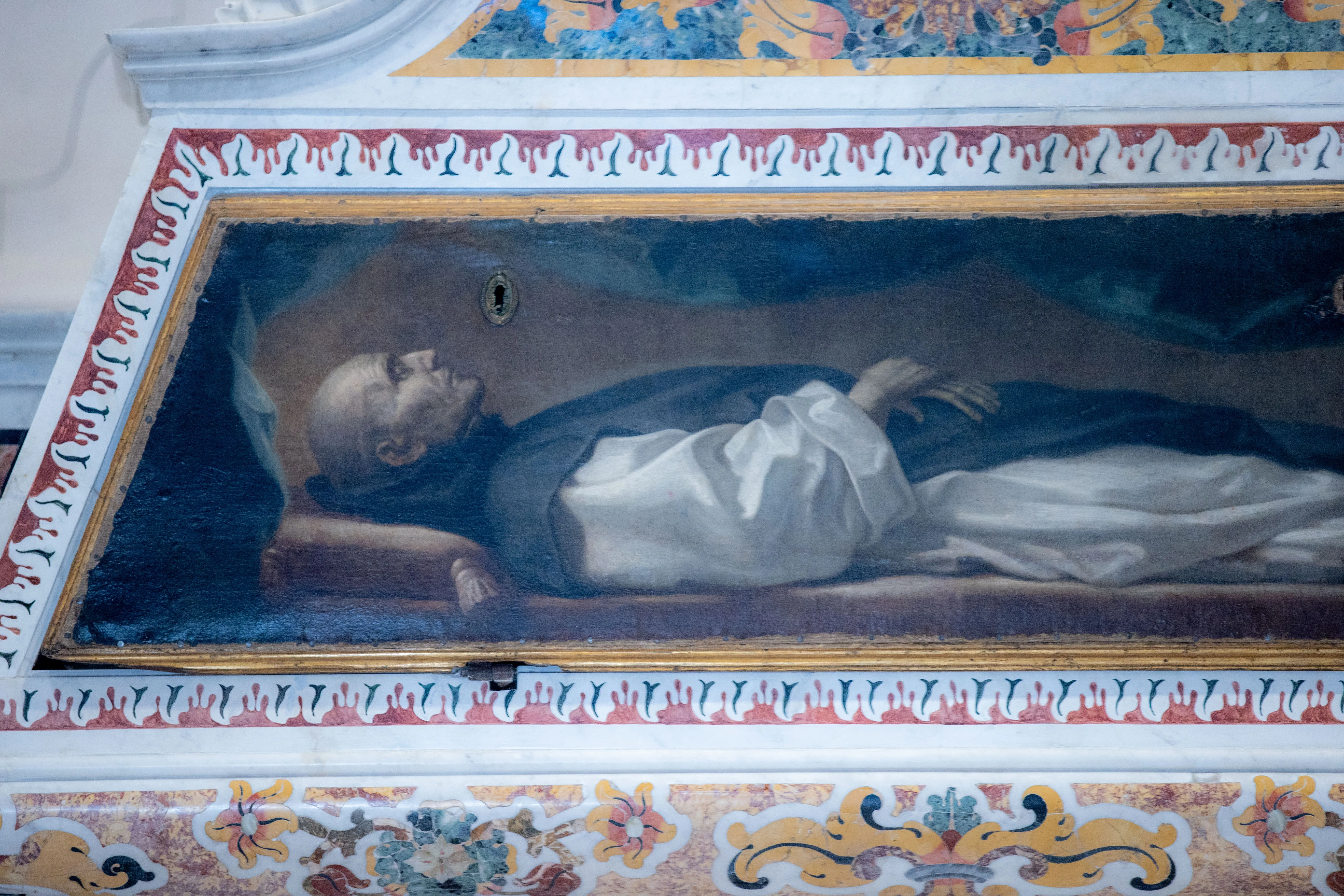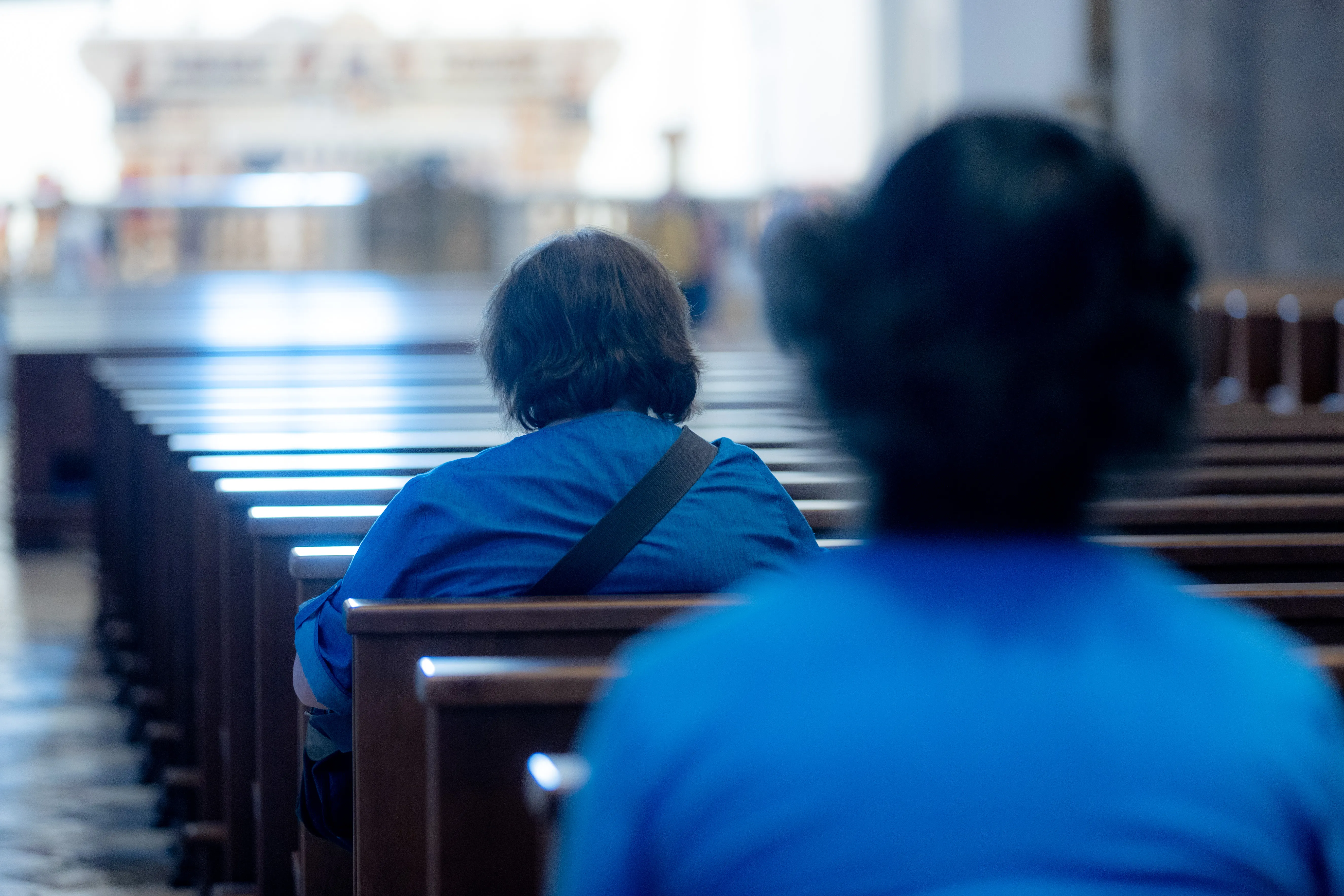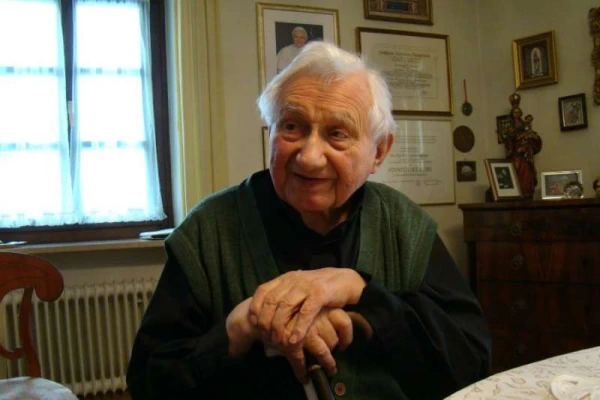
Rome Newsroom, Aug 21, 2022 / 03:38 am (CNA).
Peter of Morrone was an unusual choice for pope.
He was not a cardinal, for one, but a Benedictine monk and hermit living in a remote mountainous cave. He was also around 80 years of age.
But the Church’s 11 living cardinals had spent more than two years in a stalemate over the new pope’s election. So when the saintly Peter delivered to the cardinals the message that God would punish them for any further delays — his name was put forward, and soon after, on Jul. 5, 1294, a consensus was reached.
Bishops carried to Peter’s mountain hermitage the news of his election to the papacy. He reportedly was reluctant to accept, even trying to flee. Still, on Aug. 29, 1294, he was crowned Pope Celestine V in the Basilica of Santa Maria di Collemaggio in the city of L’Aquila.

According to historical sources, besides kings, nobles, and cardinals, more than 200,000 people attended the ceremony, a grand moment of celebration.
One month later, one of Celestine’s first actions as pope was to declare the possibility for anyone to receive a plenary indulgence who, having confessed his or her sins and sincerely repented of them, devotedly visited the Basilica of Santa Maria di Collemaggio between sunset on Aug. 28 and sunset on Aug. 29, the feast of the martyrdom of St. John the Baptist.

A plenary indulgence is a grace granted by the Catholic Church through the merits of Jesus Christ, Mary, and all the saints to remove the temporal punishment due to sin.
Celestine’s indulgence was exceptional at the time, given it was available to anyone, regardless of status or wealth, and cost nothing except personal repentance at a time when indulgences were often tied to almsgiving. For this reason, some consider the Celestinian Forgiveness, as it came to be called, history’s first jubilee.
Unfortunately, Pope Celestine V did not reign long enough to see the legacy of his indulgence. As pope in 1294, he was also the ruler of the Papal States, but he soon proved to be an ineffectual political leader.
On Dec. 13, five months after his election, he resigned from the papacy.
Pope Boniface VIII, Celestine’s successor, imprisoned the former pope out of fear that opponents to the resignation might try to install Celestine as an antipope. Celestine V died a prisoner ten months later.
Peter of Morrone was canonized in 1313 and since 1327 has been buried in the Basilica of Santa Maria di Collemaggio in L’Aquila.

According to Johannes Grohe, a professor of Medieval History, the Celestinian Forgiveness was the precursor to the Holy Years, or Jubilees, which the Church typically celebrates every 25 years.
In 1300, Pope Boniface VIII issued a bull of indulgence proclaiming that Christians who confessed their sins, received the Eucharist and made a pilgrimage to Rome could receive a plenary indulgence.
Boniface VIII “was inspired” by Celestine V’s own “Jubilee” in L’Aquila, which started in 1294 and continued after his papal abdication and death, Grohe told EWTN News in an interview last month. “This indulgence of Pope Celestine V was the precursor, one could say, to the first great Jubilee.”
Both traditions continue to this day. In L’Aquila, the Celestinian Forgiveness, or Perdonanza Celestiniana as it is called in Italian, will celebrate its 728th year with a visit from Pope Francis on Aug. 28 to open the Holy Door.
Now a week-long festival, the Forgiveness has come to be an essential cultural, as well as spiritual, event.
Jubilee years in the Church, also called Holy Years, have continued throughout the centuries. A critical aspect of a Holy Year is the indulgence attached to walking through the Holy Door of one of Rome’s four major basilicas, including St. Peter’s.
Preparations are already underway in Rome and the Vatican for the next ordinary jubilee in 2025.
If you value the news and views Catholic World Report provides, please consider donating to support our efforts. Your contribution will help us continue to make CWR available to all readers worldwide for free, without a subscription. Thank you for your generosity!
Click here for more information on donating to CWR. Click here to sign up for our newsletter.






Leave a Reply